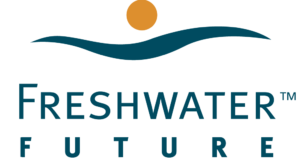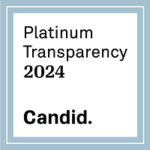Michigan, in parallel with other states, is working to establish definitions and scoring systems for their State Revolving Fund programs that provide low-interest loans and forgivable loans and grants to water systems to pay for projects to keep their drinking water safe and to ensure their waste water systems are operating within the law. The funds for these loans and grants comes from Congress, and because Congress and the U.S. EPA have issued guidance that certain percentages of the funding must go to “disadvantaged communities” the process of defining those communities and how the applications for funding will be scored are critical to keeping water costs down in low-income communities. Freshwater Future has prepared comments on this process, and final comments are due to the state by September 15. Our comments are below and if you have any feedback please let us know, or if you would like to use these comments to craft your own, please do so.
Freshwater Future is submitting the following comments in blue, often compared with EGLE’s language, regarding the new definitions and scoring criteria required under the recently passed SRF legislation.
What does “Overburdened Communities” mean?
a. “Overburdened community” means a municipality in which all of the following conditions are met:
i. Users within the area served by a proposed sewage treatment works project or stormwater treatment project are directly assessed for the costs of construction. We support this section.
ii. The median household income of the area served by a proposed drinking water, sewage treatment works project or stormwater treatment project does not exceed 100% of the statewide median annual household income for this state. We prefer to see that the median annual household income of the area served by a proposed project does not exceed 120% of the statewide median annual household income for Michigan. This should make more communities competitive under this definition.
iii. Environmental Justice (EJ) Screening: During the August 10th Scoring and Definitions Stakeholder meeting, a member of the Michigan Environmental Justice (MiEJ) Advisory Council inquired about the state’s plans to target EJ communities with cumulative impact issues. We appreciate that EGLE Deputy Director James Clift asked stakeholders on the call to keep this issue “front and center” while sharing that attention to these communities will be considered from now on.
We strongly recommend that the new definitions and scoring process incorporate this MiEJ tool that was mandated by Governor Whitmer for use in these types of processes‘.
EGLE should utilize an Environmental Justice Screen (from either the state or the US Environmental Protection Agency) to the community submitting the proposal. For example, if using the state MiEJ screen, the top quintile (20%) of composite scores should be considered significantly overburdened communities, and scores in the highest 21-30% should be considered overburdened.
Utilizing the MiEJ screen would ensure inclusion of low-income communities, communities of color, or Tribal and Indigenous communities that experience, or are at risk of experiencing, higher or more adverse human health, environmental effects, or unaffordable rates.
iv. The municipality demonstrates at least one of the following:
A. The taxable value per capita of the area served by a project falls into the communities representing the lowest 20% of Michigan’s population within that category. (In 2021, the value is $22,920 per capita)
We have concerns about the decision to use “taxable value per capita” in this definition. While EGLE believes this indicator can help capture communities that have experienced disinvestment, it is our understanding that this metric is untested and not used in any other state. We would prefer to see the MiEJ screen used as a better tool for determining low-income communities and those disproportionately impacted by environmental harm.
B. The median annual household income of the area served by the proposed project is less than the most recently published statewide median annual household income for this state, and annual user costs for the corresponding portion of the water system (sewage and stormwater treatment, or drinking water) exceed 1% of the median annual household income of the area served by the proposed sewage treatment works project or stormwater treatment project.
The use of median annual household income of the area served is a concern in this section, because although 1% of MAHI may be affordable to median households and above, it gives no indication of what percentage of income this would be for the lowest income households in the area. MAHI too easily hides the burden to low income households if there are significant high income households in the area.
b. A community which qualifies as a significantly overburdened committee would also be considered an overburdened community. However, any potential benefits may only be claimed under one designation or the other. We support this section.
What does “Significantly Overburdened Communities” mean?
Proposed new definition:
i. Users within the area served by a proposed drinking water, sewage treatment works project or stormwater treatment project are directly assessed for the costs of construction. We support this section.
ii. Environmental Justice (EJ) Screening:
During the August 10th Scoring and Definitions Stakeholder meeting, a member of the Michigan Environmental Justice (MiEJ) Advisory Council inquired about the state’s plans to target EJ communities with cumulative impact issues. We appreciate that EGLE Deputy Director James Clift asked stakeholders on the call to keep this issue “front and center” while sharing that attention to these communities will be considered from now on.
We strongly recommend that the new definitions and scoring process incorporate this MiEJ tool that was mandated by Governor Whitmer for use in these types of processes.
EGLE should utilize an Environmental Justice Screen (from either the state or the US Environmental Protection Agency) to the community submitting the proposal. For example, if using the state MiEJ screen, the top quintile (20%) of composite scores should be considered significantly overburdened communities, and scores in the highest 21-30% should be considered overburdened.
Utilizing the MiEJ screen would ensure inclusion of low-income communities, communities of color, or Tribal and Indigenous communities that experience, or are at risk of experiencing, higher or more adverse human health, environmental effects, or unaffordable rates.
iii. The municipality demonstrates at least one of the following:
A. The median annual household income of the area served by a proposed project is less than 125% of the federal poverty guidelines for a family of four in the 48 contiguous United States. In determining the median annual household income of the area served by the proposed sewage treatment works project or stormwater treatment project under this sub-paragraph, the municipality shall utilize the most recently published statistics from the United States Census Bureau, updated to reflect current dollars, for the community that most closely approximates the area being served by the project. As used in this sub-paragraph, “federal poverty guidelines” means the poverty guidelines published annually in the Federal Register by the United States Department of Health and Human Services under its authority to revise the poverty line under 42 U.S.C. 9902. (For 2022, the 125% level would be an annual household income of less than $34,687.) We support this section.
B. The taxable value per capita of the area served by a project falls into the communities representing the lowest 10% of Michigan’s population within that category. (In 2021, that value is less than $15,170 per capita.) Again, see above for our concerns about using this metric.
Other Feedback
Feedback is provided here pertaining to scoring criteria for consolidation and lead service line replacements, and in regard to geographic flexibility of projects benefiting disadvantaged communities within larger water systems.
1. Scoring Criteria IC: Consolidation
We propose a language change for “consolidation” that will protect municipal sovereignty and self governance; ensuring there is a threshold for agreement among entities before undergoing consolidation:
For those systems with no existing community governance function of the water system (i.e. apartment complex or mobile home park) the point system is helpful. For systems with existing community governance (municipal and other systems), consolidation points should be awarded only if all communities that will have a system shuttered have held a resident vote (referendum) indicating their approval to consolidate their system, resulting in a system being shuttered. The agreements leading to a referendum must include and be communicated to the public:
A. The communities having a system shuttered must be compensated for the assets they have historically paid for and will lose in the consolidation.
B. The agreement must also include structures for joint oversight of the consolidated system with representation of residents from each municipality.
2. Scoring Criteria IIA: Lead Service Line Replacements
We recommend that communities doing lead pipe replacements without a past ALE should be provided 20 points rather than 10 to incentivize proactive replacement under the Michigan LCR.
3. Geographic and Demographic Flexibility:
We strongly recommend that EGLE allows geographic flexibility that would steer beneficial financing and forgiveness for targeted projects in disadvantaged communities situated within a larger water system with a highly stratified taxpayer base. In other words, projects that qualify as an overburdened or significantly overburdened community should receive grants, principal forgiveness, or extended repayment plans with below-market interest rates for a specific project in that overburdened community despite being situated within a larger community served by the same water system. The U.S. EPA made it clear in the 2022 BIL Implementation Memo that “reaching disadvantaged neighborhoods within larger communities” is a priority of SRF program implementation (U.S. EPA 2022, p. 26). Below is a passage from the report that expounds on the importance and acceptability of geographic flexibility when considering affordability and disadvantaged community status.
Section IV.(B)(1) Program Implementation (p 26):
Reaching Disadvantaged neighborhoods within Larger communities:
The CWA specifically allows CWSRF programs to provide additional subsidization to communities that do not meet a state’s affordability criteria, but where the assistance recipient seeks additional subsidization to benefit individual ratepayers in the residential user rate class that will experience a significant hardship from the increase in rates necessary to finance the project if additional subsidization is not provided. EPA expects states to work with EPA and stakeholders to identify how this provision can be implemented. EPA expects states to evaluate their affordability criteria to determine whether it can be crafted broadly to include neighborhoods with affordability concerns within larger communities.
The SDWA authorizes states to define a “disadvantaged community.” Note that some states define a disadvantaged community to include a large public water system where a particular project within the system addresses a sub-set of the service area that meets affordability criteria. EPA has accepted this type of definition and believes that it is consistent with the definition of “disadvantaged community” at 42 U.S.C. §1452(d)(3). These definitions are not prohibited and serve to make the DWSRF definition of “disadvantaged community” consistent with the CWSRF affordability criteria which considers particular ratepayers.








